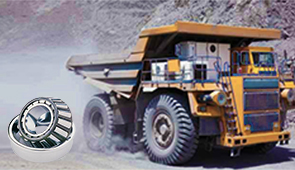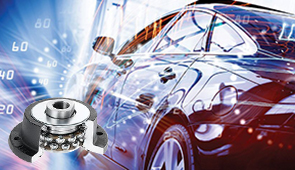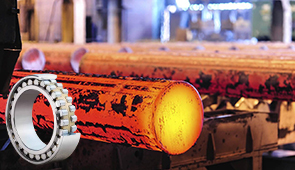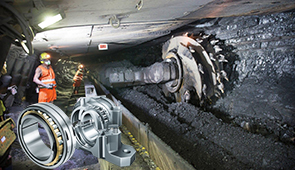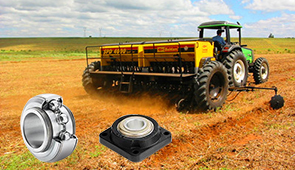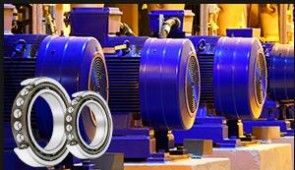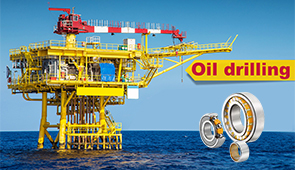Radial Play vs Axial Play: Understanding Bearings and Clearance
Bearings are integral components in countless mechanical systems, ensuring smooth operation and longevity of machinery. However, understanding the nuances of bearing clearance—particularly the concepts of radial play and axial play—is critical for proper performance and reliability. These terms define the internal movement allowances within a bearing and directly impact factors such as load distribution, friction, and operational efficiency. For engineers and technicians, knowing how these variables influence machinery can mean the difference between seamless functionality and premature failure. This article explores radial play and axial play in detail, shedding light on their definitions, differences, and practical implications in mechanical systems. Keep reading to uncover the essential knowledge needed for optimizing bearing performance and selecting the right clearance for your application.
Introduction to Radial and Axial Play
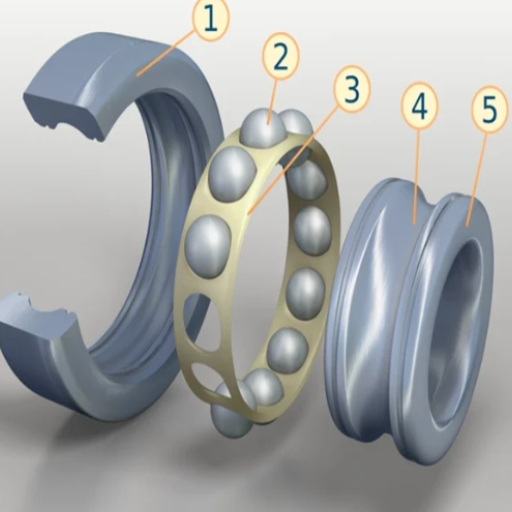
Definition of Radial Play
Radial play, sometimes also called radial clearance, corresponds to the total displacement or movement that can take place in a direction perpendicular to the bearing axis when a load is applied. It is very important for bearing performance because it affects the operation, load distribution, and hence the life expectancy of the equipment. The radial play is measured as the clearance or gap left between the rolling elements and the raceways. It signifies how far a bearing can go in adapting to an increase in temperature, misalignment, or vibration.
The value of radial play interferes with the many performance factors of the bearing. For instance, less radial play means increased friction and heat generation due to too much contact between elements, which can lead to premature wear and tear or failure. Excessive radial play can cause vibrations, defeat the purpose of having accurate rotation, and undermine machinery performance. Consequently, an appropriate radial play must be set to the particular operating condition.
To accurately measure radial play, a standard procedure is commonly followed, usually involving an axial displacement method under controlled conditions. Several major activity-specific standards have different classifications of radial play ranges from which manufacturers must select to be appropriate for their applications. Bearing radial play is a prime consideration while aiming to ensure optimum functionality and efficiency of mechanical applications.
Definition of Axial Play
The phenomenon of axial play sets apart the development of a complete motion for a bearing or a part along its axis of rotation. Quite of some importance when an application demands precise axial positioning, it ensures that mechanical systems operate within their designed tolerances. Excess axial play, however, can degrade performance, increase wear, or worse, cause serious mechanical failure.
There are established industry standards in measuring and controlling axial play. Examples of these standards are those published by ISO and ANSI. The standards give proposed ranges within which axial play should fall for specific types of bearings and applications so that the designers and engineers can correlate system requirements and performance capabilities; the measurement will mostly be done by dispensing a certain axial force and measuring the resultant displacement range along the axis.
Correct axial-play management can greatly help reduce vibrations, noise, wear, and tear in mechanical systems such as gears, shafts, and rotating machinery. Maintaining the axial play within the provided range and monitoring axial displacement during its operational life enables systems for maximum efficiency, guaranteeing their durability and reliability in heavy industrial or commercial applications.
Importance in Mechanical Systems
Axial play, as in various mechanical systems, is one factor that is important to upholding a function as designed. Maintaining control of axial displacement ensures that the relative axial displacement angle between the bearing and the shaft, gear shaft, bearing and shaft, and so on is kept to a minimum during the operation, thereby minimizing stresses. Without adequate management of axial play, the friction might increase, wear might become excessive, and the system might finally be disrupted into a failure, a loss that is particularly unfortunate in very precise areas such as manufacturing or aerospace machinery.
When axial play lies within the limits prescribed, the systems undergo lowered vibration and noise production that are also synonymous with improved performance and, of course, user safety and comfort. Excessive axial movement in gears could misalign teeth causing inefficiency and damage; if, however, axial play were eliminated, undue stresses might arise; hence, it is important to strike an exact balance depending on system tolerances.
Industries deploying advanced axis-monitoring systems often need to track axial displacement in real-time, enabling predictive maintenance and thereby minimizing downtime. Establishing acceptable levels of axial play for a given application must be resorted to engineering standards such as ISO or ANSI. By adhering to these standards, agencies can maximize operational efficiency while ensuring dependability under exigent conditions and prolonging system life.
Key Differences Between Radial and Axial Play
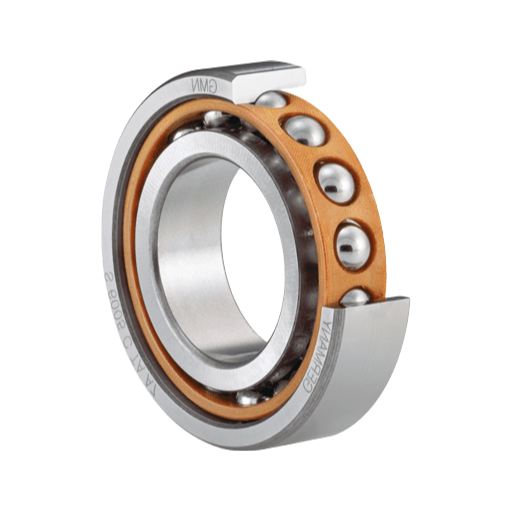
Measurement Techniques
The measuring of axial and radial play could happen through precise measuring methods adapted to the parameters that were measured. For axial play, a common one considers applying a dial indicator to measure linear displacement along an axis of rotation. The component would be compressed and extended to the limits of operation, and the total displacement would be recorded. Fixtures should be stable, with as few interferences as possible.
On the contrary, measuring radial play requires displacement measurements perpendicular to the axis of rotation. Generally, this is performed by advanced measuring equipment such as shaft alignment systems or laser-based measurement devices, which guarantee high precision and reproducibility. Additionally, such data acquisition systems can enable real-time analysis for precise adjustments in extremely tight tolerances.
Having all these techniques integrated with the latest technological advancements, engineers intend to seek better accuracy and conform to the demands of the industry, thus avoiding the risks of mechanical failure.
Roles in System Functionality
The working of any system is based on a layered architecture having individual components with specific assignments, which bear on its performance and reliability. At the topmost level are sensors and actuators, controllers, and user interfaces. Sensors gather data from the environment by measuring temperature, pressure, or vibration levels from a certain source and convey them to the system for processing. Actuator actions are controlled and converted into real physical actions that cause the machinery or process to implement specific tasks efficiently.
The controller is the center of intent in such a design. It receives input data, follows specified algorithms, and makes decisions that coordinate with the objectives of the system. In the majority of cases, controllers use feedback loops to improve results and remedy deviations detected in real-time. The user interface meanwhile allows an operator to monitor system status and enter configuration information for any customizations needed to fit the system into varying condition changes or requirements.
For maximum system functionality, integration between the components must be seamless and supported by robust software and data acquisition tools. Well-defined communication protocols enforcing regulatory frameworks will further make these systems interoperable and compliant with varying industries.
Challenges Presented by Each Type
There are peculiar challenges encountered in each type of system and in each company, which must be addressed for efficient operationalization and management. In hardware-based systems, the primary challenge is to ensure that the diverse components fit together while working uninterruptedly under uncertain environmental conditions. Often, reliability and durability needs are pitted against cost constraints, thus limiting the use of a few high-end materials.
Otherwise, the software side is challenged by timely responsiveness when critical time-related operations are very low. Conversely, complicated software updates and version controls could also become a potentially adverse touch to be addressed with utmost care and security framework. Their interoperability with legacy systems and present-day architectures further adds to the already existing problems of integration.
Connectivity-related or network-oriented systems are oriented toward the compromise on bandwidth optimization, latency management, and data integrity. In ensuring consistent communication under heavy traffic or operations dispersed across several geographical locations, these advanced network infrastructures may not sometimes be realized.
With the merging of these challenges from the hardware, software, and network worlds, hybrid system issues arise requiring a holistic approach. Synchronization of these constituents remains unfeasible at several junctures due to varying standards, possible security loopholes, and the intricate problem of investigating interdependent failures. An impeccable design coupled with a thorough test regime is the only way to counter these multidimensional issues and deliver on the promise of a working, scalable system.
Practical Applications of Radial and Axial Play
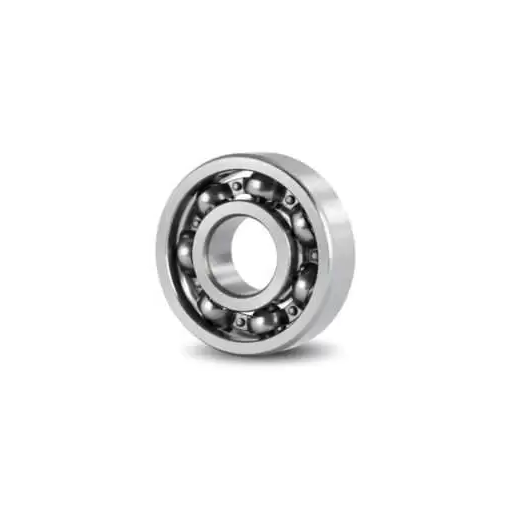
Real-World Examples in Bearings
Radial and axial play, often referred to as internal clearance, is basically a measure of importance that governs bearing performance and reliability under different working conditions. For example, high-speed applications, such as electric motors and turbine systems, require correct radial play to accommodate thermal expansion without losing rotational accuracy. Excess radial clearance causes vibrations and noise, but too little clearance produces excessive friction and premature wear.
Similarly, axial play is very important for bearing applications in machinery like pumps or gearboxes where axial loads change incessantly. For instance, in a centrifugal pump, proper axial play allows for shaft elongation under thermal stress while maintaining the alignment of its sealing arrangement.
Bearing specifications have evolved to control these clearances very well through the use of advanced materials and modern manufacturing processes. Ceramic hybrid bearings, for instance, tolerate closer tolerances and deform less with temperature changes and hence find applications in aerospace and medical equipment. Computer-aided simulations allow further assessment and optimization of internal clearances for avoiding building internal stresses upon working and service life restrictions under even the harshest environment implementations. Appropriately set radial and axial play improves mechanical dynamics while cutting the chances of downtime, which directly impacts the efficiency and reliability of industrial operations.
Impact on Performance in Shafts and Gears
The function of shafts and gears is closely associated with the fidelity of their design and tolerance criteria for their internal components. Radial and axial play must be accurately provided if torque transmission is to be smooth and free of wear or misalignments. Large clearances lead to vibrational instability, reduced accuracy in rotational motion, and accelerated fatigue of materials. Clearances that are too tight, however, would cause friction to rise and the mechanical components to heat up and fail prematurely.
Materials and coating technologies stand tall in the mitigation of such risks; for example, surface treatment processes such as carburizing or nitriding improve wear resistance. Finite element analysis tools allow engineers to evaluate stress distribution and deformation prediction over dynamic loads and thus carry out proactive design optimizations.
The arrival of state-of-the-art manufacturing methods such as 5-axis CNC machining has changed the scenario by allowing shafts and gears to be fabricated with great accuracy and tolerances narrowed down to micrometers. Therefore, their ability to withstand loads and the efficiency with which they operate are two properties of utmost importance in industrial and automotive applications. Since slight improvements relate to the prolongation of operating life and reduction of maintenance costs for shaft and gear assemblies, they further extend the overall system reliability.
Longevity Considerations in Mechanical Systems
The durability of mechanical systems is directly connected to material selection, surface treatments, lubricants, and their combinations. Superalloys and composites find newer applications to guard against the worsening effects of wear, fatigue, and corrosion. The surface hardening heat treatment techniques, such as carburizing and nitriding, significantly ameliorate the operation time of gears and shafts by removing surface irregularities that pose a site for stress concentration.
Similarly, in lubrication, it is crucial to reduce friction loss and to avoid heat builds up in high-stress scenarios. Synthetic lubricants that possess thermal stability and viscosity are considered preferred choices. The real-time monitoring systems equipped with IoT sensors are the next wave that changes maintenance to provide predictive data about wear conditions and enable maintenance teams to preempt unscheduled downtimes.
With the integration of advanced materials, treatments, and monitoring systems, the contemporary mechanical design ensures not only reliable function but also extended operational lifespan even in extreme operating environments. Such criteria have to be invoked to optimize performance and reduce total life cycle expenditure in every industrial sector.
Industries Where Radial and Axial Play Matter
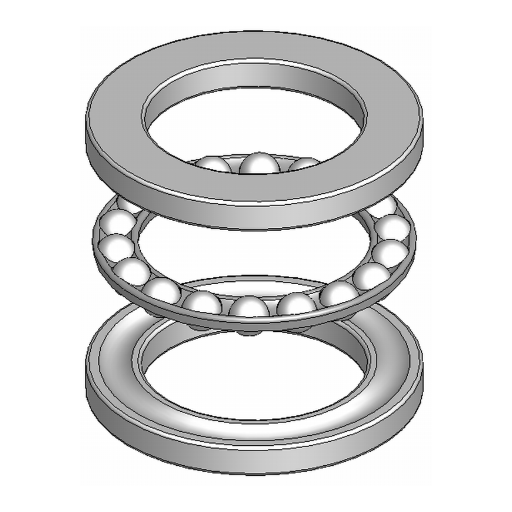
Significance in Automotive Engineering
From my experience, the significance of radial and axial play in automotive engineering cannot be overemphasized. These are the measurements that ensure the proper working of rotating elements such as bearings, shafts, and wheels. Radial play refers to movement in the direction perpendicular to the axis, whereas axial play refers to movement in the direction along the axis; both kinds of play directly affect performance, safety, and the service life of the automotive system. Preserving tolerances in these measurements serves to minimize wear, preclude overheating, and avoid abrupt breakdowns of components during service.
For instance, in wheel hub assemblies, excess axial play would bring about imprecise wheel alignment, uneven tire wear, and poor road safety. Radial play in mechanisms of the drivetrain and engine works against efficient power transmission and upsets vibration limits. The more in-depth the analysis and selection of these tolerances during design and manufacture, the smoother the operation, the lower the noise, and the better the fuel economy that automotive engineers obtain.
The correct balancing of radial and axial play is also a prerequisite for another requirement of cutting-edge automotive technology that includes electric and hybrid vehicles. Such systems need highly efficient and finely mingled components so that performance gets maximized while minimization of energy is underway. The use of advanced materials, modern simulation tools, and precision manufacturing processes would allow manufacturers to work with tighter tolerances to guarantee quality in toughness and accuracy even as automotive applications become more thermodynamically complex.
Aerospace Applications
In aerospace, every single component demands super-ultimate precision, a guarantee of reliability, and durability to ensure safety and operational efficiency under unsuitable conditions. Engineering and materials science innovations form the core of those applications, in order to assure fulfillment of such demanding applications. Below are five key applications where such advances are a must:
- Turbofan Engines: Turbofan engines are dependent on the use of very high-performance materials and precisely engineered components, which have survived at temperatures above 2,000°F (1,093°C) while retaining the operational stability of the system. High-temperature coatings combined with nickel-base superalloys are used to improve life and efficiency.
- Avionics Systems: The avionics systems nowadays are designed to include lightweight electronic components and systems that undergo testing to guarantee the electronics function while undergoing extreme vibrations and temperature variances. Avionics systems are basic for navigation, communication, and flight-status monitoring in real time.
- Lightweight Structural Components: Aerospace structures demand a high strength-to-weight ratio to increase fuel efficiency. Composite materials such as carbon-fiber-reinforced polymer have become contenders, given that they offer an excellent mechanical performance while drastically reducing weight.
- Landing Gear Systems: Landing gear is subject to heavy stress during takeoff and landing. Here, advanced alloys and precision manufacturing methods would be pivotal in ensuring high fatigue resistance and shock absorption.
- Thermal Protection Systems: Given that thermal protection systems are employed in space vehicles and high-speed aircraft, they must withstand reentry temperatures well over 3,000°F (1,650°C). These are mostly ceramic materials and ablative heat shields used for protecting vital systems and architecture.
Each of these applications is a great expression of the development of material sciences and precision engineering, requisite to satisfy the high aviation standards for safety and performance.
Tips for Managing Radial and Axial Play
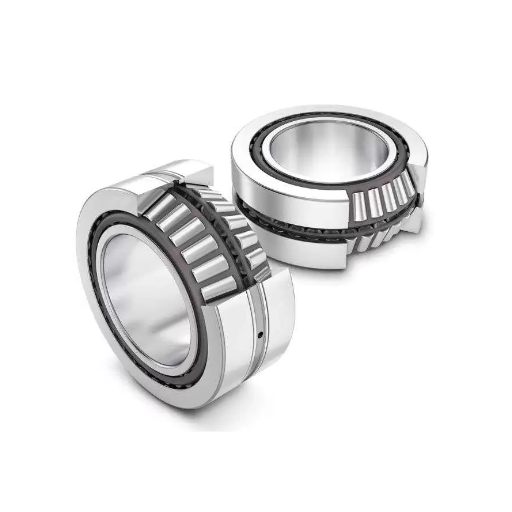
Maintenance Practices
It is essential to understand radial and axial plays while maintaining mechanical systems since these parameters largely determine the capacity, performance, and life span of any system. Radial play is the clearance measured perpendicular to the axis of rotation due to which issues like uneven load distribution, vibrations, and early wear of components might surface. Similarly, axial play corresponds to any end movement along the axis of rotation, which, if left uncontrolled, can cause malalignment, higher stress on bearings, or seals to undesirable levels.
In a maintenance program, periodic inspections become fundamental and should be done to catch early signs of wear patterns and misalignments. Using precision measurement devices such as dial indicators and micrometers will help you measure tolerances accurately and prevent deviations from going unnoticed. Another major practice should be lubricant management since proper lubrication reduces friction and helps dissipate heat, thereby prolonging the life of the components. Real-time monitoring strategies such as vibration analysis and thermal imaging offer an understanding of how components behave under working conditions.
When used in concert, proactive maintenance integrated with evolving materials and engineering designs ensures further reliability and efficiency of the system. Furthermore, by documentation and following manufacturer recommendations, will guarantee the integrity of radial and axial play within the present acceptable parameters.
Inspection Techniques
The inspection methodology accepts prime importance for making sure of the safe performance of mechanical systems. A reliable inspection methodology may be a combination of advanced and basic techniques to plan for failures that would otherwise develop into major issues. Optical inspection devices such as borescopes allow the operator to examine internal components in detail without major disassembly. Such inspection means non-intrusive testing that protects the system and minimizes downtime. Ultrasonic inspection is then considered one of the foremost suitable methods for detecting subsurface defects or irregularities, particularly in load-bearing structures-seeking higher precision compared to surface inspections.
Thermographic testing is among the key inspection tools. This technique employs an infrared camera to analyze temperature contrasts over the equipment components. Abnormal heat signatures point to major problems that may include excessive friction, electrical faults, or misalignments. When these insights are merged with the data from sensor-based monitoring, maintenance technicians can now embark on predictive maintenance so as to predict the remaining useful life (RUL) of components and more accurately schedule replacement, thereby greatly reducing unplanned repair instances along with their costs.
In conjunction with this, enhanced inspection methods are increasingly supported by machine learning and data analytics algorithms, which process large volumes of operational data to detect anomalies that could be missed during manual inspection. For instance, AI-driven software can predict with reasonable reliability the wear patterns or structural degradation. Such inspection techniques enhance system reliability when joined with comprehensive documentation and strict adherence to regulatory standards, ensuring that operations are fully compliant with industry standards. This all-encompassing approach is an example of how technology advances join forces with classical engineering to realize excellence in operations.
Tools for Measuring Clearance
Clearance measuring is a crucial process in particular industries such as engineering and manufacturing where everything must be really accurate. Advanced tools are introduced to maintain the highest accuracy and reliability in clearance measurement. Classic tools are feeler gauges, which apply to small gaps and provide a truly mechanical solution to measure them. They comprise several calibrated metal strips to fit in tight spaces for exact clearances. Dial indicators are another very useful instrument and are often set along with a stand for precision measurements of minute displacements and deviations in alignment.
Laser displacement sensors have meanwhile evolved to be used in cases where non-contact measurement is desired with unusually high tolerances. By using laser triangulation, micrometer accuracy can be achieved, which is indeed very useful for any modern automated system that demands a high degree of precision. On the other hand, ultrasonic thickness gauges use sound waves for measuring clearances at unseen places, thereby extending their scope for inspection. By interfacing these instruments with digital interfaces and IoT-based systems, one could visualize, store, and analyze data generated in real time and hence effectively streamline the workflow and attain reliability.
The basis of tool selection must remain intricately focused on operative needs, applied material properties, and tolerance requirements, emphasizing the undying need to tie technological know-how to actual measurement needs.
Frequently Asked Questions (FAQ)
Q: What is the difference between radial play and axial play?
A: Radial play refers to the total displacement of the outer ring in a bearing when subjected to radial loads, while axial play refers to the movement along the axis of rotation. Both types of play are crucial for bearing performance and affect how the component accommodates loads and vibrations.
Q: How does radial play in bearings affect performance?
A: Excessive radial play can lead to increased vibration and misalignment, compromising the accuracy and efficiency of machinery. Maintaining suitable radial clearance ensures that bearings operate within their designed tolerances, minimizing wear and prolonging service life.
Q: What are the common applications of axial play?
A: Axial play is commonly found in applications where components experience thrust or axial loads, such as in ball bearings or roller bearings. Proper management of axial movement is essential to prevent premature failure and maintain operational efficiency.
Q: How can I measure radial and axial play in a bearing?
A: To measure radial play, you can use a dial indicator to assess the total radial displacement of the outer ring. For axial play, you can apply a force perpendicular to the bearing axis and measure the movement. This helps ensure the internal clearance is within specified tolerances.
Q: What factors can reduce radial play?
A: Factors that can help reduce radial play include selecting the appropriate fit for the bearing, ensuring proper lubrication, and using bearings designed with minimal clearance. Additionally, thermal expansion and load conditions should be considered to maintain optimal performance.
Q: How does axial preload affect axial play?
A: Axial preload applies a constant load along the axis of rotation, which can help reduce axial play. This preload ensures that the inner and outer rings maintain contact, enhancing rigidity and reducing the risk of excessive displacement that can lead to wear.
Q: What role does temperature play in radial and axial play?
A: Temperature can significantly impact the clearance in bearings due to thermal expansion. As the temperature rises, the material expands, potentially increasing radial and axial play. It’s essential to account for temperature variations during operation to maintain bearing integrity.
Q: How does misalignment affect radial and axial play?
A: Misalignment can cause excessive radial and axial play, leading to uneven load distribution and increased wear on the contact points of the bearings. Ensuring proper alignment is crucial for optimal bearing performance and to reduce the risk of failure.
Q: What is the significance of clearance in bearings?
A: Clearance, both radial and axial, is critical in bearings as it affects how well the components accommodate loads and thermal expansion. Too much clearance can lead to excessive play, while too little can result in increased friction and wear, impacting the overall performance of the machinery.
UCTH213-40J-300 with Setscrew(inch)
CNSORDERNO: Normal-duty(2)
TOGN: UCTH213-40J-300
SDI: B-R1/8
SD: 2 1/2
UCTH212-39J-300 with Setscrew(inch)
CNSORDERNO: Normal-duty(2)
TOGN: UCTH212-39J-300
SDI: B-R1/8
SD: 2 7/16
UCTH212-38J-300 with Setscrew(inch)
CNSORDERNO: Normal-duty(2)
TOGN: UCTH212-38J-300
SDI: B-R1/8
SD: 2 3/8
UCTH212-36J-300 with Setscrew(inch)
CNSORDERNO: Normal-duty(2)
TOGN: UCTH212-36J-300
SDI: B-R1/8
SD: 2 1/4
UCTH211-35J-300 with Setscrew(inch)
CNSORDERNO: Normal-duty(2)
TOGN: UCTH211-35J-300
SDI: B-R1/8
SD: 2 3/16
UCTH211-34J-300 with Setscrew(inch)
CNSORDERNO: Normal-duty(2)
TOGN: UCTH211-34J-300
SDI: B-R1/8
SD: 2 1/8









